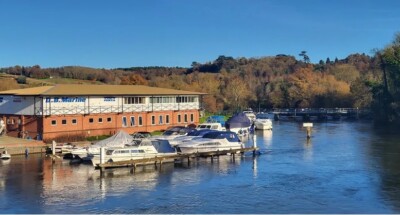Green Belt – what is in a name?
The Green Belt. England's "green" land saved for its environmental quality...
The Green Belt. England’s “green” land saved for its environmental quality, protected due to it being a haven for wildlife and it is “all of the beautiful countryside around us”. Well, that is what my mum told me, and probably the answer you will get if you ask most people. And on that basis, who can blame anyone for wanting to “save our Green Belt”, strongly opposing any development on it? The new PM (third one this year so far) Rishi Sunak has previously stated his commitment to protecting the Green Belt.
(https://www.telegraph.co.uk/politics/2022/07/27/rishi-sunak-save-britains-precious-green-belt/).
Thing is, that description is not why land is designated Green Belt. Yes, you will find land in the Green Belt which has high environmental quality, which is a haven for wildlife, and there are large swathes of countryside which are designated Green Belt. But Green Belt policy is, fundamentally, an urban containment policy. National Policy (NPPF para 137) is very clear on this:
“The fundamental aim of Green Belt policy is to prevent urban sprawl by keeping land permanently open; the essential characteristics of Green Belts are their openness and their permanence.”
No mention of biodiversity. No mention of intrinsic visual beauty. No mention of environmental quality, “greenery”, trees, water, etc.
How much land is Green Belt? Well, according to National Statistics (ref: https://www.gov.uk/government/statistics/local-authority-green-belt-statistics-for-england-2020-to-2021/local-authority-green-belt-statistics-for-england-2020-21-statistical-release), 1,614,000ha of land in England is designated as Green Belt. Or 12.4%. The majority of land that people think of as Green Belt is not Green Belt, it is open countryside or designated for other reasons, e.g. as an Area of Outstanding Natural Beauty (AONB), National Parks or Sites of Special Scientific Interest (SSSIs).
As Map 1 shows, most Green Belt land is concentrated around the major cities – London, Birmingham, Liverpool and Manchester in particular.
There is frequent mention of how much of the Green Belt is being eroded. Table 3 shows there has been a lot of variation in the net changes to land designated as Green Belt year on year, and it is not, per say, reflective of more development coming forward on Green Belt land. Instead, it results from the (slow) progress of Local Plans, with changes to Green Belt boundaries happening as Local Plans across the Country are updated and adopted etc. It is not a constant erosion – hence the lower figure last year which follows a few years of Local Plans being adopted in authorities with Green Belt land. Historically many of these authorities are slower at adopting or reviewing new Local Plans, partly due to the protection the Green Belt offers them. Instead it becomes a reason not to progress plans, with St Albans (a Local Plan dating back to 1994, numerous failed attempts and only a couple of years of housing land supply) being a prime example.
The effect of having an out-of-date Green Belt policy is unsustainable development. Take the example of Buckinghamshire, an authority that is effectively split down the middle by the Green Belt. The net effect is more pressure for housing and economic development in the former Aylesbury Vale area, and little within areas closer to London where there is greater affordable housing need and house prices are significantly higher, but high economic activity. People are forced to live further from work, particularly in lower paid roles, and commute greater distances or find jobs elsewhere leading to higher levels of out commuting and more and more traffic.
Central Bedfordshire, with a similar proportion of Green Belt to non-Green Belt land, has also suffered from unplanned less sustainable development due to Green Belt constraints. Prior to adopting their Local Plan in 2021, Central Bedfordshire lost a number of appeals on 5-year housing land supply. This resulted in development coming forward in areas that were less sustainable than those parts of Bedfordshire within the Green Belt.
What is the solution? Not just a name change (removing Green from the name would be a good start), but a fundamental redesign of Green Belt policy which facilitates sustainable development, rather than preventing it, and in turn places greater protection in the right locations. Politicians have consistently steered away from changes to Green Belt policy due to the emotive and misplaced views that it is an environmental policy. Proposing such a fundamental change to it is largely considered political suicide. However, in a time when the Conservative party are significantly behind in the polls and facing the distinct possibility of defeat in the next General Election, perhaps now is the perfect time to make these changes. If it works then they can claim success at protecting the environment and making a fundamental, positive change to the planning system. If it fails, the next Government will have to deal with the fallout. Win win, surely?
Written by Mark








